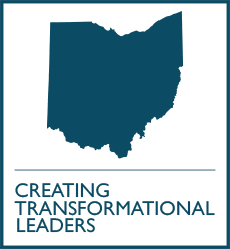Feb 11

From Pipetting to Publishing — Early Steps in a Researcher’s Career
Publishing your first manuscript with a “first author” credit is a huge milestone for young researchers. Brianna Guarino, now in her third year of Northeast Ohio Medical University’s Integrated Pharmaceutical Medicine Ph.D. program, works in the lab of Charles Thodeti, Ph.D. She recently reached that special milestone and agreed to share her thoughts and suggestions for others on the same path.
Coming to NEOMED, I knew I wanted to do cancer research. However, I had very limited experience with molecular laboratory techniques. Fortunately, I joined a lab that allowed me to learn as I proceeded into my project. My advisor, Dr. Thodeti, gave me a starter project within the first month of joining the lab. This gave me the opportunity to perfect critical skills, such as pipetting, and granted me the autonomy to learn hands-on rather than by just observing others. This starter project ended up advancing into what will now be my dissertation research – tumor angiogenesis.
So, my first piece of advice is to start actually doing experiments as early as possible. Learn the principle behind the technique, observe the technique once or twice, write down the steps as you observe, then try to repeat it on your own.
My next piece of advice is to focus on what can reasonably be accomplished. It’s easy to get carried away into side projects or experiments that just aren’t feasible. Side projects are great, but spending too much time on them can prolong the publication process. A manuscript should be like a story, where each piece of data leads to the next. Make sure not to spend too much time gathering data that doesn’t fit into the story.
The last piece of advice I’d like to give – and this applies to all researchers, including summer research fellows or volunteers – is to take opportunities to help fellow lab members. Typically, a first author publication takes years of planning experiments, collecting data, analyzing data and writing before the peer review process even begins. This means that in the eight weeks of summer, it’s not common to publish a first author paper. Instead, focus on co-authoring. Every lab has different criteria for becoming a co-author, but typically, if you have gathered enough data to generate a figure (graph, image, etc.), you have earned authorship. Helping multiple lab members can earn you multiple co-authored publications quickly; that’s great for students who have limited time in the lab!
A little background for those who aren’t familiar with the peer review process: Once the manuscript is written, it is sent to the journal of choice. The editor of the journal receives the paper and at this stage it is either rejected or assigned reviewers. It usually takes a minimum of four weeks for reviewers to send their comments back to the authors. The reviewers will come back and either accept the paper in its current form (rare) or with “minor revisions,” “moderate revisions,” or “major revisions.” This back-and-forth process can continue for quite a bit of time until the manuscript is ultimately accepted.
Although it is a stressful and prolonged journey, the reward is worth it. Each piece of knowledge added to the field of study can eventually lead to the discovery of something huge, and it feels incredible to be a part of that.

